I can’t really explain who I am and what I do now without telling the story of where I came from. The elements of experimentation, innovation, collaboration and community-building in my work today, began in a very different context.
Picture me in my early 20s in Auckland studying philosophy while DJing and playing in bands on the side. I was in my first year of a master’s program and I was a bit bored. My curious and active mind needed another outlet. I loved music so I applied for a job as a station manager for this small under-resourced local radio station, Contact89 fm. This decision took me on a wild journey for a good 10 years, into the free radio scene, the pioneering days of early internet streaming and the international scene of technology art.
As the station manager for Contact89 fm I found myself at the centre of the music scene, setting up a record label, organising events and generally just making stuff happen and bringing people together. I quickly learned about the role of community-building around any project. I managed this radio station for 3 years, had a short stint where I started and managed a local TV station and then I got hired to manage BFM, a much bigger and better resourced station. I went there thinking that with all these resources at my fingertips, I would be able to experiment as much as I wanted. But the exact opposite happened. The station had built a reputation for being innovative years before but they had just stopped there, resting on the laurels of that former success. Ironically the reputation of the radio station was now what restricted it from trying anything new. It was at this point that I realised that innovation is not a place that you reach, it is a constant journey.
Feeling more than a little disappointed, I left BFM in 1995 searching for a space where I really could innovate. Internet streaming was just kicking off and I happened to get a job as the business manager for two geeks in Adelaide who introduced me to streaming media. I took what I knew from radio and ventured into the uncharted territory of internet radio. I moved to Europe and became part of a nomadic clan of people who were using the new freedom of the internet art world to do ridiculous and often groundbreaking things with this technology.
During this time, I also got drawn into activism. I organized net.congestion one of the festivals for the new wave of internet activists who were using streaming for activism. When Nato bombed Kosovo in 1999 I co-founded a campaign to put a spotlight on B92, an independent Serbian radio station under pressure from the Milosivec regime. This blossomed into one of the world’s first large scale internet activist moments, using tools to organize people and raise awareness which back then were totally new. I was also part of a project in Macedonia helping the Pristina-based station Radio 21 to bypass censorship, using streaming to broadcast Albanian refugees’ stories via Netherlands shortwave back to their families.
I am incredibly grateful for this period of my life. As an artist I enjoyed the freedom to introspect and just explore my own ideas; to develop my own process for creating, regardless of what the results were. This has given me a significant trust in myself to be experimental, no matter what problem I am trying to solve. As an activist, I got to use my skills to help valuable projects flourish and I think I still live that principle in my work with both Coko and Book Sprints. In both fields I got to experience the fulfillment of being part of a community united by the common vision of finding a better way to do things, and I continue to try to build communities like this around my own projects today.
Below are more details of all the projects (there were alot!) that I was created or collaborated on in this time.
Seaweed
2008, Quarantine Island, New Zealand
This project was actually called ‘Intertidal’ but I like the name ‘Seaweed’ better. Douglas Bagnall and I created a one-day community project to discover a new species of seaweed. We hosted this on Quarantine Island in the Dunedin Harbour and together with a marine biologist from the local research center, invited anyone to come work with us to search for a new species. The project was a community project, also a reflection on the notions of species as an outmoded idea and on taxonomy as a dying art. About 50 or 60 people – individuals, groups, and families – came out on the free boat (provided by the local sea scouts) and hiked across the island to participate on a coldish Dunedin day to search for and document seaweed. We possibly discovered a new species.
throwing into focus the ever-present potential for new knowledge. Drawing upon 19th century methods of species discovery, involving collecting, looking and drawing, their work formed questions around what we don’t know.

Geek-o-system
2008, Christchurch, New Zealand
Julian Priest, Dave Merritt and I drove about a tonne of old electronics 700km or so in an old Landrover (top speed 35km/hr) from Dave’s warehouse in Wanganui to an art gallery in Christchurch, New Zealand. In the gallery, we served up the old electronics as a participatory art project and invited anyone to come and build new objects from the old. It took 3 days to get there. It was an adventure.
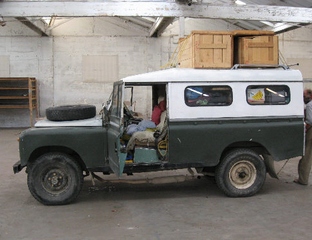
A Geekosystem was a participatory workshop based on a redundant technology collection created by David Merritt. Items were selected from the collection and packed into a Landrover and driven to The Physics Room in Christchurch. A call for participation was issued by The Physics Room and a group of geeks gathered to re-configure the technology into artworks. A workshop space was created and plinths were placed at once end of the gallery and populated with artworks made from the e-waste. The workshop was open to the public and continually added to during the duration of the show. Old technology books were formed into a library. Proprietary software manuals were shredded and mixed with coffee grounds. This was mulched into soil and silver beet seedlings were successfully germniated in floppy disk trays.
A Geekosystem was shown first at the Physics Room in Christchurch in 2008 and then at The Green Bench during the Whanganui Open studio week in 2008. The Geekosystem garden was transferred to a permanent location and produced vegetables for a number of years.
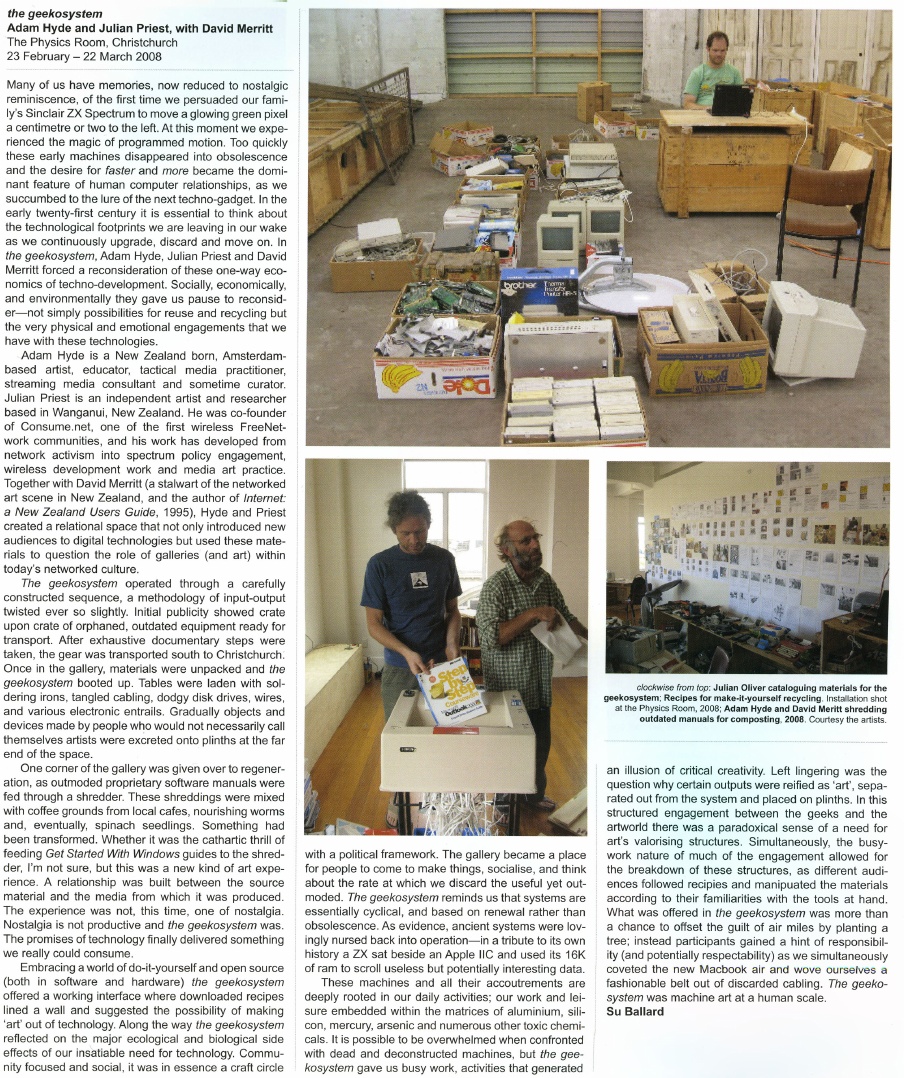
Paper Cup Telephone Network
2006, Exhibited at the Exploratorium in San Francisco, Zero One Festival in San Jose, and many other venues.
This was a project I made with Matthew Biederman and Lotte Meijer. The Paper Cup Telephone Network (PCTN) was a free communication system and a comment on how ‘simplicity’ in technical systems is trickery; it also problematised the corporatisation and ever-increasing individualisation of modern communications.
The PCTN was a network of paper cup telephones. Just like the games played by children, anyone could put a PCTN cup to their ear to listen, or to their mouth to speak. However, the difference between the PCTN and the original game is that the “string” is connected to the World Wide Web where your voice is streamed to all the cups on the network carrying it, blocks or even miles or a continent away. We built the entire system from free software telephony systems (asterisk and SIP phones), open and standards-based telephony protocols, cups, and string.
As simple as it was, it remains the most difficult technical project I have ever undertaken.
Wifio
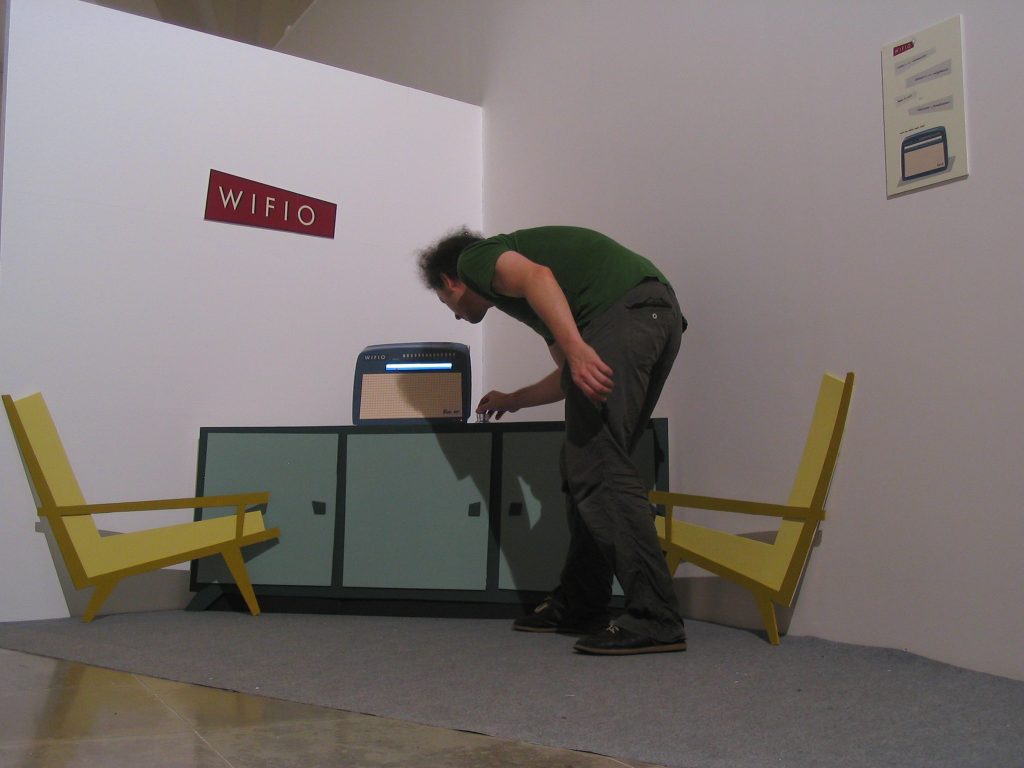
2006, exhibited at the Waves exhibition in Riga, Latvia
Wifio was a project I did with Lotte Meijer and Aleksandar Erkalovic. Wifio was a comment on the naivety in which we broadcast our personal information. It was a hardware UI and software that allowed anyone to tune into the World Wide Web wifi traffic. If someone near you was browsing the web on a wifi network, you could simply tune in with Wifio by selecting the right channel and tuning into their IP address.
…but don’t worry, you don’t need to know what their “IP Address” is, in fact you don’t even need to know what an IP address is! Just move the dial until you hear their emails or what they are saying in chatrooms.
I was proud when Julian Oliver (an old buddy from NZ) referenced this project as inspiration for one of his works.
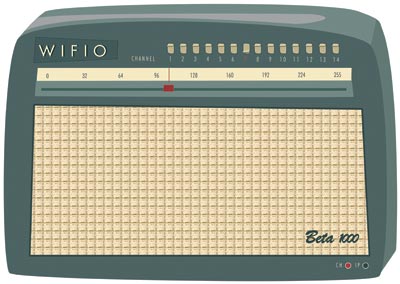
Sound Elevator
2007
r a d i o q u a l i a (see below) were commissioned to make a new work for Forte di Bard in Valle d’Aosta in Italy for “Cima alle stelle (Stars)”, a large exhibition showing historical works by major masters like Durer, Tintoretto and Guercino; contemporary artists such as Pierre Huygue, Olafur Eliasson and others; and astronomical instruments and writings by Copernicus, Galileo, Kepler, Newton and Einstein.
We made a new site-specific sound installation inside two of the glass elevators which take visitors from the arrival area of Forte di Bard, to the gallery levels. Much of the elevator travel is external to the Forte (pictured below). Sound Elevator consisted of two linked sound environments inside the elevators. As the elevators ascended to the exhibitions halls, visitors experienced an auditory journey from the local celestial environment to the edges of the Universe. In the first elevator, visitors sonically travelled through the Earth’s ionosphere and magnetosphere, hearing our closest star, the Sun, interacting with our planetary atmosphere. The upward and outward journey continued in the second elevator, with sounds from our planetary neighbours, the sonic echo of distant stars, and finally the sound of the Big Bang itself.
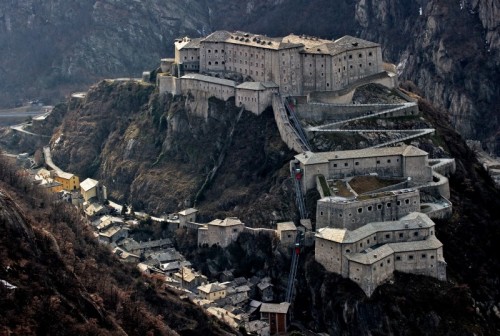
I-TASC
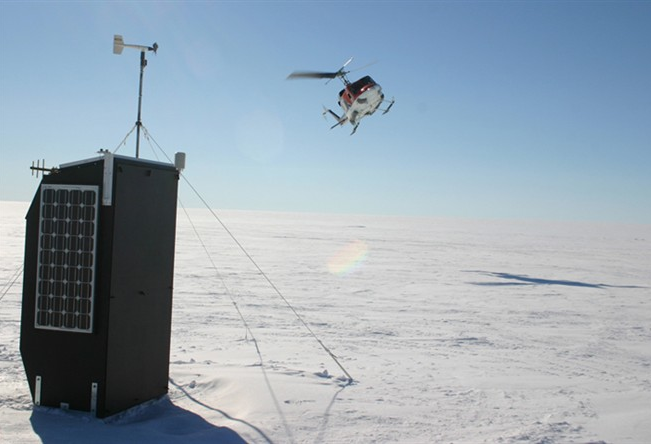
2006/2007 Antarctica
I did a 2-month residency in Antarctica at SANAE (South African Research Base) as part of I-TASC, ultimately a failed network of individuals and organisations working collaboratively in the fields of art, engineering, science and technology on the interdisciplinary development and tactical deployment of renewable energy, waste recycling systems, sustainable architecture and open-format, open-source media. But it was still a great experience.
The coolest thing about it, was the 2 weeks each way on the beautiful icebreaker the SA Agulhas (now decommissioned). I kept some diary pages on the Interpolar site. I also did a few other projects while there including Polar Radio (see below).
The worst thing about it was that we shouldn’t have been there. There is no need for anyone to be in Antarctica. Most of the ‘science’ projects are strategic positioning for a land grab when the time comes. Some science might be justifiable… but arts projects?
Leaving Antarctica I cried my eyes out. It was just too much for me to deal with. Too amazing. After Antarctica, I gave up the art world. I couldn’t think of anything else the art world could do for me.
It was a conflicted but beautiful experience.
Polar Radio
2006/2007, Antartica
Polar Radio was a community radio project initiated by I-TASC and
r a d i o q u a l i a. The first prototype station began FM broadcasts on 29 December 2006 in the Dronning Maud Land sector of Antarctica, where South Africa maintains their base, SANAE IV. It was Antarctica’s first artist-run radio station. It was the first step towards establishing a permanent polar radio presence in Antarctica, which may eventually broadcast in between geographically dispersed Antarctic bases.
But y’know…I wish I hadn’t done it. When I first got to Antarctica I turned on a radio and went through many many frequencies… and I heard nothing… that was amazing. Where else in the world can you not hear anything on your radio? I then went ahead and polluted the spectrum. Darn. I regret it.
Polar Radio was part of a series of projects run by I-TASC – the Interpolar Transnational Art Science Constellation.
Mobicast
2005, Transiberian Express
Capturing the Moving Mind was a conference on board the Trans-Siberian train. It was about new forms of movement and control, war and economy, in the current situation. 50 international researchers, artists and activists participating in the mobile conference formed a mobile production unit aboard the train. For the audiovisual streams, Luka Princic and I developed a free software ‘mobicasting’ platform which enabled mobile transmission of material on the web from mobile phones on the train. Mobicast was initially developed during a residency I had at MAMA Media Lab (Zagreb, Croatia).
It was a great project but really really fragile. The tech of the time was not up to it. Mostly it ran on Puredata and some obscure bits of code from here and there. Still it worked. Best moments were hanging out on the train laughing at people trying to be ‘artists’ in real time… huh? …and getting sardonic with Dr Gillian Fuller – the world’s best queue hacker. Watching the train wind around the Gobi desert… also kinda cool.
mobicast was initially developed to overcome the problem of delivering live video from a moving train to the internet. Traditionally this is the domain of OB (Outside Broadcast) technologies or expensive vehicular satellite uplink hardware. However mobile phones are now very capable remote broadcast environments. Many modern phones record images, video, audio and allow the editing and transfer of these media through wireless data networks (eg. GPRS) with almost global coverage. The quality of these recorded media have generally been considered ‘low-fi’ but fidelity is increasing and importantly, the expectations of networked media are becoming more appropriate. Once upon a time there was a mythic “broadcast quality” threshold all media had to pass before being accepted by broadcast organisations and (theoretically) audiences. However, now there are active calls for content generated by “on the spot” accidental observers by large scale media organisations. The tide and scale of remote media is changing. The nature of experimental media on this type of platform is the intentional playground of mobicasting. With this emerging new type of media witness cultural forms are also emerging. Multiple networked media phones is in itself a platform for collaborative cultural development and opens interesting doors for experimental media.



MiniFM and SilentTV
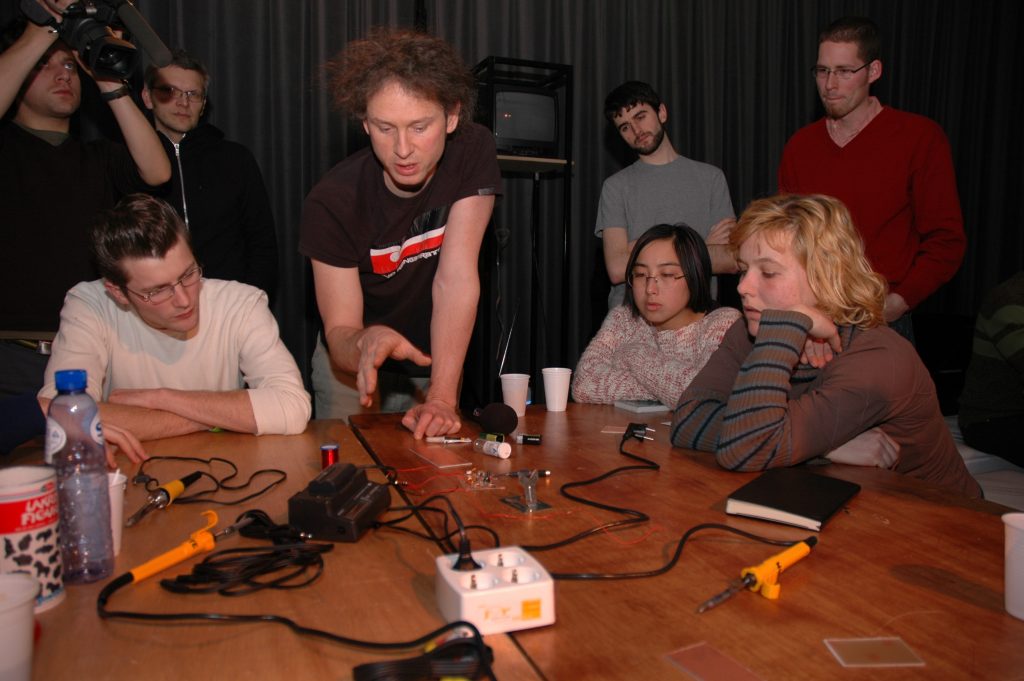
2001-2004, International
For many years I had a wonderful mentor – Tetsuo Kogawa. He is the father of MiniFM. I saw Tetsuo build a mini FM transmitter at the Next Five Minutes festival in Amsterdam.
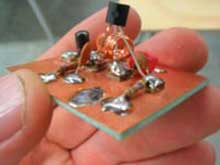
Sometime after that, I asked him if he would teach me how to make them too, and he very generously spent a good deal of time making sure I understood the ins-and-outs of the process. Together we designed a workshop and Tetsuo worked out even simpler ways to build the transmitters. For many years I travelled the world leading transmitter-building workshops and often Tetsuo would stream in from his studio in Tokyo to talk about the idea and give a quick demonstration before we started building.
Later Tetsuo and I created a project called SilentTV which was the same idea but using simple elements to broadcast TV.
I’m forever grateful to Tetsuo for his kindness and mentorship.
re:Play
November 2003, South Africa
re:Play explored the world of the computer game. It featured an exhibition of artists’ computer games by Andy Deck, Josh On + Futurefarmers, Mongrel, Natalie Bookchin, the escapefromwoomera collective and Max Barry, and a programme of workshops and lectures. re:Play was a collaboration between the Institute for Contemporary Art, Cape Town and r a d i o q u a l i a. It launched at L/B’s – The Lounge at Jo’Burg Bar in central Cape Town, South Africa, and went on to be exhibited at Artspace and the Physics Room in New Zealand.
The games in the exhibition were not typical computer games. While all of them encouraged play, and involved a gaming objective, unlike regular computer games, they had a strong political dimension and explored how play, interaction and competition can be utilised in an artistic context.
The re:Play education programme included talks and workshops lead by Graham Harwood of Mongrel and r a d i o q u a l i a at Cape Town High School, Fezeka Senior Secondary School in Gugulethu; the Alexandra Renewal Project, Johannesburg and at Wits School of Arts, University of the Witwatersrand, Johannesburg.
Free Radio Linux
2002, The World
Another project that got a lot of attention for r a d i o q u a l i a, most notably through being exhibited at the New Museum in NYC, but it also at Banff and other places. I loved this project because it brought together several threads.
Formally, Free Radio Linux was an online and on-air radio station. The sound transmission was a computerised reading of the entire source code used to create the Linux Kernel, the basis of all distributions of Linux.
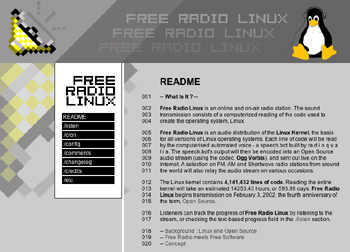
Each line of code was read by an automated computer voice – a speech.bot utility I built for the work. The speech.bot’s output was encoded into an audio stream, using the early open source audio codec, Ogg Vorbis, and was broadcast live on the internet. FM, AM and Shortwave radio stations from around the world also relayed the audio stream on various occasions.
The Linux kernel at that time had 4,141,432 millions lines of code. Reading the entire kernel took an estimated 14253.43 hours, or 593.89 days. Listeners tracked the progress of Free Radio Linux by listening to the audio stream, or checking the text-based progress field in the ./listen section of the website (which is no longer up)…
Essentially this was all about how free radio and free software were wierdly the same. If you ever worked with free radio geeks, you will know they are nerdy technophiles who believe in the purity of what they are doing. Very much the same as Open Source geeks at the time. Most were interested in the tech and the political ideal of the respective mediums (radio and software). So, FRL was a comment on this. It was also a comment on how free radio was, ironically, very difficult to achieve on the internet unless serious attention was made to developing free codecs. But also FRL had two other elements going for it. The first was to (again) poke fun at the ridiculous hyperbole that surrounded the open source movement. People were expounding this ‘amazing new phenomenon’ and extrapolating how it would change the world (much as they did about wikis a short time after) when they had never come into contact with code or geeks. So this was an attempt to expose those people to the code…or what it sounded like. But also, at the time there was a lot of early talk about how to preserve digital media (a problem still not solved) and radio waves apparently never die… so by broadcasting the Linux kernel into space we were preserving it on the oldest medium ever, forever. Hehe…
I did, however, feel very sorry for the attendants at the New Museum who had to work 8-hour shifts listening to “one dollar sign dollar sign comma hash four new line seven two dollar sign dollar sign…”
Thing FM
2002, New York City
This was, in theory, a radio network but in reality, just a few transmitters got installed. Still, it was fun. Thing FM was based in NYC and built during a residency I did at the Thing in NYC. The same week that the Yes Men came into the office to film their ‘shit burger’ stunt. They came into the Thing and asked who wanted to go and I didn’t go! doh! Anyway, we built the network using internet audio (via wireless and wired connections) and miniFM. Each of the transmitters was about 0.1 W output and sourced their audio live from the internet using the Frequency Clock scheduling system I had built earlier.

This partly adopts the ethic of micro-radio as founded by Tetsuo Kogawa, where many low powered FM transmitters are coupled to create an effective broadcasting entity that ‘falls beneath the radar’ of the communication authorities. fm.thing.net combined this ethic with that of net.radio which was a relatively new phenomenon focusing on the use of the internet as a carrier signal, best illustrated by the practices of the Xchange network. By combining the net.radio and micro-radio we hoped to build an efficient radio network in New York that used the internet as a primary carrier of the audio for re-broadcasting on legal or almost legal microFM broadcasts.
Hanging with Ted Byfield and Jan Gerber was a highlight of this experience. Wolfgang Strauss was also pretty fun but I was so intimidated by him. He was just so cool. Also sharing a tenement apartment in Ludlow Street with 3 people (bath in the kitchen) was pretty fun.
Radio Astronomy
2001
Radio Astronomy was an art and science project which broadcasts sounds intercepted from space, live on the internet and on the airwaves. The project was a collaboration between r a d i o q u a l i a, and radio telescopes located throughout the world. Together we were creating ‘radio astronomy’ in the literal sense – a radio station devoted to broadcasting audio from our cosmos.
Radio Astronomy had three parts:
- a sound installation
- a live on-air radio transmission
- a live online radio broadcast
Listeners heard the acoustic output of radio telescopes live. The content of the live transmission depended on the objects being observed by partner telescopes. On any given occasion, listeners may have heard the planet Jupiter and its interaction with its moons, radiation from the Sun, activity from far-off pulsars or other astronomical phenomena. Honor from rQ later made a TED Talk about it.
Dino, drummer from HDU, did the website design… that’s gotta rate…

RT32
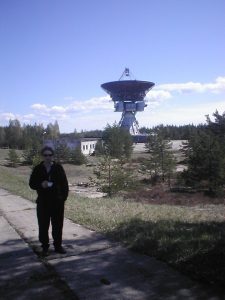
2001, Latvia
In 2001 I had the good fortune to be part of the Acoustic.Space.Lab project which started a long love affair with the RT32 radio telescope. Formerly a cold war device, this telescope was liberated when the Russian Army pulled out of Latvia. I worked with this telescope as an artistic device and with the generous scientists for many years after. The doco clip below introduces the explorations of the international Acoustic Space Lab Symposium which took place on the site of RT-32 in 2001.
Highlights of this period in Latvia included being evicted by Russian builders, getting a hernia, and being amazed Marc Tuters survived eating so many dodgy looking mushrooms he found in the forest.
Open Sauces
May 2001, Scotland and also later…
I have come to realise there is just too much stuff I have tinkered with to comment on. Open Sauces falls into that bucket. Google tells me this was 2001. Essentially I got sick of all the Open Source blah blah of the time.. everything was suffixed by OPEN and it got very tiring (Open Gov, Open Hardware, Open Society…). No critical reflection on the fact that geek methods are geek methods and they are not transportable – AND – OPEN processes, methods etc existed well before geeks came along and inherited the word. No geek invented openness. I’m still tired of this I have to say…still…. I created Open Sauces which was an open database of recipes… anyone that did a residency could add their favourite recipe and you could just tick all the ingredients you have in your fridge and get a recipe to suit… doesn’t sound too revolutionary but at the time this sort of thing didn’t exist.
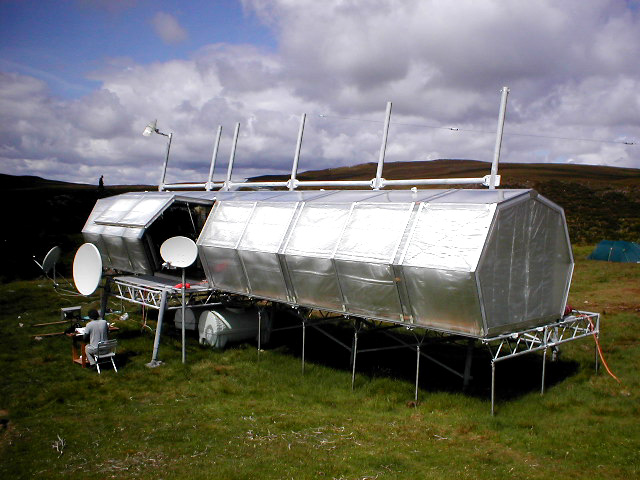
It was a comment on this abuse of the use of the word ‘open’ and how cooking way preceded sharing of ‘code’ / ‘instructions’ etc… and also how food is probably the most important part of any collaborative project, whereas unsocial nerdy talk is optional. Later Fo.am in Brussels were inspired by the idea and started an Open Sauces theme.
net.congestion
2000, Amsterdam
I’m particularly proud of this project. It came about when I was a very naive newly arrived resident of Amsterdam. I suggested to Geert Lovink this idea for a festival and he said to speak to Erik Kluitenberg. Both huge legends in my mind you understand… I mustered the courage up to suggest it to Erik who was a cultural curator at De Balie at the time. He said he would think about it and I thought I wasn’t very convincing. A week later he called me up and said let’s do it! Whoot!
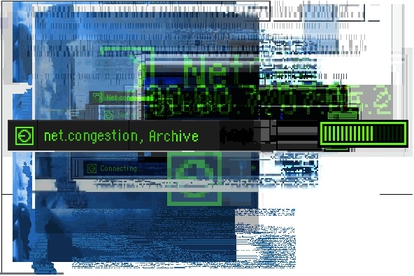
The festival was held in Amsterdam in October 2000. Net.congestion was an intensive three-day celebration and critique of the new cultures that have arisen from all forms of micro-, narrow- and broad- casting via the internet, now collectively known as streaming media.
The event covered most of the interesting ground of the time for streaming media, from the transformation of issues surrounding intellectual property to the uses of streaming as a mobilisation tool for global resistance through to the more rarefied questions of aesthetics and how narratives are transformed when embedded in networks. The overwhelming experience of many visitors to Net.congestion was a sense of tools, networks and sensibilities being re-purposed, returning us, again and again, to a primary experience of the net as a social space.
Net.congestion occurred just months before dot.com bubble burst, exploding the ‘new economy’ and ‘the long boom’ with its fantasies of a world in which the economic laws of gravity had been repealed. There is no doubt that if the same event were to be held now, the atmosphere would be markedly different. It is not that Net.congestion was an industry event which depended on the hype for its existence, as the very title indicates that we mixed a healthy dose of skepticism with our festivities. But none of us, however critical, can entirely escape the zeitgeist and there is no doubt that in those brief heady days Warhol’s aphorism was re-written; we could all dream of becoming billionaires, if only for 15 minutes. A strange historical phase when (particularly for anyone involved in streaming media) the normally fixed boundaries between business, art, technology, science fantasy and just plain bullshit temporarily blurred to create a moment of unique cultural hysteria. In that sense our timing was perfect.
The Theory Machine
2000
In an attempt to make theorists a little more funky, I made a software they could use to put their brainy thoughts to glitchy syncopation. It was mainly used by Eric Kluitenberg including one memorable performance at Club Otok in Dubrovnik.
HelpB92
1999, Amsterdam
I helped found an organisation during the Nato bombing of Serbia and Kosovo in 1999. The international support campaign for independent media in Yugoslavia, including the famous Radio B92 media centre, in operation between March and July 1999. We did some pretty cool things but mostly I was very happy to be involved in what must have been one of the web’s early large-scale activist campaigns.
 It was also the start of my longish relationship with Amsterdam as XS4ALL offered me a job and I stayed for a few years. I still have a bike there somewhere.
It was also the start of my longish relationship with Amsterdam as XS4ALL offered me a job and I stayed for a few years. I still have a bike there somewhere.
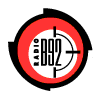
What was tricky, though, is that I agreed to go to Skopje to assist an Albanian refugee radio station (Radio 21). It was kinda nerve-wracking. There were literally bombs set to explode to take out as many Albanians as possible. Some kids lost their legs across the street from where I was working. I was a milk and cookies boy from NZ.. what was I doing here? Still, I stuck it out and we managed to set up quite an innovative way of getting radio transmissions out of the refugee camps to Radio Netherlands Shortwave.. .I’ll write that up when I get time.
The Frequency Clock
1998 – 2004 or so, The World
This was one of the earliest r a d i o q u a l i a projects and how I learned to program. To understand this project you have to understand the dark ages of the internet when video and audio hardly existed. Essentially we built a media scheduling system that allowed you to build archives of live and pre-recorded content, tag them, and then schedule them. All built in JavaScript… remembering these were these days when Javascript was very rudimentary.
The Frequency Clock was originally conceived as a mechanism to control FM transmitters over the internet. In essence, it was a networked timetabling system, connecting globally dispersed FM transmitters so they could broadcast the same internet audio simultaneously. The original player was a popup window but we also built desktop apps to do the same thing using VisualBasic (Win) and RealBasic (Mac). All open source.
However… then we realised that video could also work… and we used it to control community TV channels in Amsterdam and Linz and we also controlled giant video billboards in Estonia and a whole lot of other things. It was exhibited a lot, most notably at the Walker (USA) when Steve Dietz was still there. We even installed a transmitter in the roof of De Waag! It was a remarkable experiment for its time. Yes, yes, pre-Napster and YouTube and all those other toys… while writing this I found some kind of prototype online.
Sound Performances
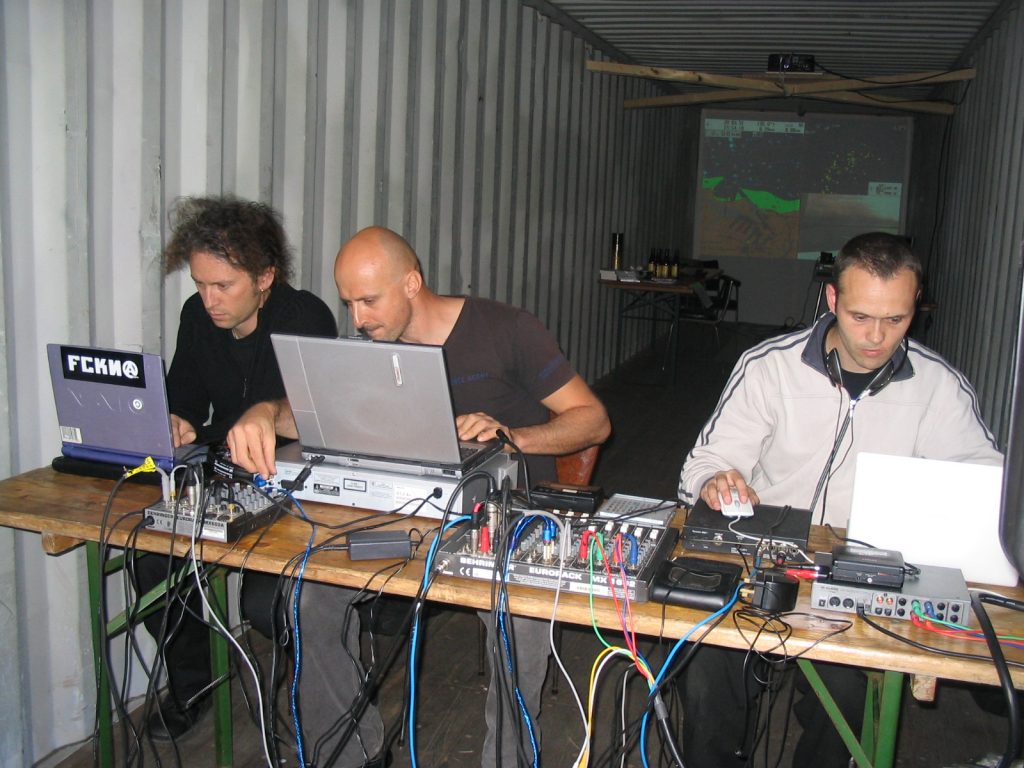
1996 – 2008, the world.
Performing solo as ‘eset’ and with Honor Harger as r a d i o q u a l i a I did a lot of sound performances, most using sounds from space and either live performances in real space or on radio. Some stuff still exists online:
https://soundcloud.com/radioqualia
Or eg:
r a d i o q u a l i a
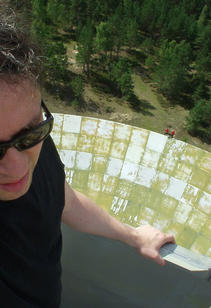
This was the project that liberated me from the south and the reason I moved to Europe with no money and no return ticket. My plan was to make coffee and do some arty stuff in London. Thankfully, Nato bombed Serbia (hoho) and everything changed.
What I really loved about this time, was that I felt part of a lovely international community of artists. We used to travel around and bump into each other in various crazy places. This group included people like Marko Pelijhan, Heath Bunting, Rachel Baker, James Stevens, Luka Frelih, the Mama crew, Lev Manovich, Steven Kovats, Matthew Beiderman, Giovanni D’Angelo, Zita Joyce, Adam Willetts, Rasa Smits, Raitis Smits and so many many others…it was an awesome time.
r a d i o q u a l i a was an artist project that consisted of myself and Honor Harger. I have described some of our exhibitions and performance projects above, and listed some below. There were many more.
In August 2004, r a d i o q u a l i a was awarded a UNESCO Digital Art Prize for the project Radio Astronomy. In September 2003, we were awarded the Leonardo-@rt Outsiders 2003 New Horizons Prize together with the participants of the Open Sky installation at the @rt Outsiders exhibition at the Museum of European Photography in Paris.
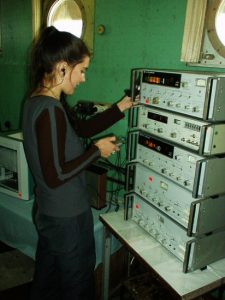
Selected r a d i o q u a l i a exhibitions and performances:
Lecture & performance at the Centre Pompidou, Paris, France
Work: Sonifying Space, as part of the Space Art conference
Exhibition at the New Museum of Contemporary Art, New York, USA
Work: Free Radio Linux, as part of the OpenSourceArt_Hack exhibition
Exhibition at the NTT InterCommunication Centre, Tokyo, Japan
Work: Radio Astronomy, as part of open nature, a show curated by Yukiko Shikata
Online exhibition / commission / installation at Gallery 9, Walker Art Centre, USA
Work: Free Radio Linux
Exhibition at Arsenals Exhibition Hall, Riga, Latvia
Work: solar listening_stations, part of WAVES
Exhibition at HMKV, Dortmund, Germany
Work: solar listening_stations, part of Solar Radio Station
Exhibition at the Walter Philips Gallery, Banff, Canada
Work: Free Radio Linux, as part of The Art Formerly Known As New Media
Exhibition at Centre d’Art Santa Monica, Barcelona, Spain
Work: Radio Astronomy, as part of Sonar 2005
Performance at Tesla, Berlin, Germany
Work: from polar radio to solar wind
Performance, La Batie Festival, Geneva, Switzerland
Work: signals as part of signal-sever
Exhibition at Ars Electronica, Linz
Work: Radio Astronomy
Exhibition at ISEA 2004, Helsinki, Finland
Work: Radio Astronomy
Symposium & Performance, Ventspils International Radio Astronomy Centre, Latvia
Work: Acoustic Space: RT32: Orchestrating the Solar System
Broadcast on Radio New Zealand
Work: Revolutions Per Minute 1: Frequency Shifting Paradigms in Broadcast Audio
Broadcast on Radio New Zealand
Work: Revolutions Per Minute 2: Little Star
Exhibition at Small Gallery, Los Angeles, USA
Work: comma.data.space: 11 Ghz
Performance at the Moving Image Centre in Auckland, New Zealand
Work: comma.data.return :: 56:30 – 21:1
Performance at Version festival, Auckland, New Zealand
Work: listening_stations v0.3: langmuir waves
Exhibition at the Physics Room, Christchurch, New Zealand
Work: re:Play
Exhibition at Artspace in Auckland, New Zealand
Work: re:Play
Exhibition & education programme, South Africa
Work: re:Play
Exhibition at the Reg Vardy Gallery, Sunderland, UK
Work: Free Radio Linux, as part of the Art for Networks exhibition
Exhibition at Museum of European Photography/ Maison Europeenne de la Photographie, Paris, France
Work: listening_stations, as part of @rt Outsiders exhibition
Exhibition at the Physics Room, Christchurch, New Zealand
Work: data.spac.ereturn, as part of the Audible New Frontiers exhibition
Locative media Residency at K2, Karosta, Latvia
Work: Locative Media
Exhibition at Turnpike Galleries, Leigh, UK
Work: Free Radio Linux, as part of the Art for Networks exhibition
Exhibition at Fruitmarket Galleries, Edinburgh, UK
Work: Free Radio Linux, as part of the Art for Networks exhibition
Radio show on Resonance 104.4FM, London, UK
Work: r a d i o q u a l i a on resonanceFM
Exhibition at the Generali Foundation, Vienna, Austria
Work: listening_stations as part of the Geography and the Politics of Mobility exhibition
Exhibition at Chapter, Cardiff, UK
Work: Free Radio Linux, as part of the Art for Networks exhibition
Performance & Broadcast, Ars Electronica, Linz Austria
Work: Radiotopia @ Ars Electronica
Radio Broadcasts on Austrian National Radio, Vienna, Austria
Work: i s o l
Exhibition at CCCB, Barcelona, Spain
Work: frequency clock – gallery installation – [sNr v.0.1]
Sonar 2001, Barcelona, Spain
Action & Broadcast, Ars Electronica, Linz, Austria
Work: Take Over Cultural Channel
Performance, Residency & Symposium at, Ventspils International Radio Astronomy Centre, Latvia
Work: Acoustic Space-Lab
Exhibition at Video Positive, Liverpool, UK
Work: Frequency Clock – gallery installation – [ vp00 v.0.0.3 ]
Workshop & Performance, Adelaide Festival of the Arts, Adelaide, Australia
Work: Closing the Loop 2000
Seminar & Performance at Lux Centre, London, UK
Work: Tuning the Net
Performance at the Stockton Festival, Stockton, UK
Work: transitions & undercurrents part of live-stock
Exhibition & Performance at OK Centrum, Ars Electronica, Linz, Austria
Work: pso.Net, as part of Sound Drifting
Exhibition at Experimental Art Foundation, Adelaide, Australia
Work: Frequency Clock – gallery installation – [ eaf v.0.0.2 ]
Exhibition at Experimental Art Foundation, Adelaide, Australia
Work: Illata
Exhibition at Contemporary Art Centre of South Australia, Adelaide, Australia
Work: e Q
Performance at LADA98 Festival, Rimini, Italy
Work: we are alive and well but terribly uncommunicative
Exhibition, Ars Electronica, Linz, Austria
Work: Frequency Clock – gallery installation – [ aec98 v.0.0.1 beta ]
Performance, Ars Electronica, Linz, Austria
Work: 56h LIVE!: Acoustic Space
Exhibition at Bregenz Festival, Bregenz, Austria
Work: gl^tch.bot
Performance and presentation at net.radio.days 98, Berlin, Germany
Work: self.e x t r a c t i n g.radio (.ser)
Online Project
Work: self.e x t r a c t i n g.radio (.ser)
Exhibition at the Machida City Museum of Graphic Arts, Tokyo, Japan
Work: The Qualia Dial
Exhibition at Fabrica New Media Art Institution, Italy
Work: Balance
BFM
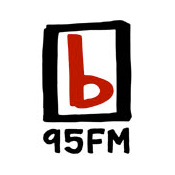
I managed the coolest independent radio station in NZ for a year and a bit.
God Save the Clean
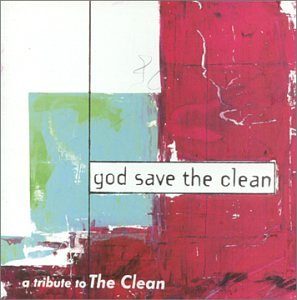
Organised and released God Save the Clean on Flying Nun Records. Included tracks by Chris Knox, Pavement, Barbara Manning, Guided by Voices, Alistair Galbraith, Head like a Hole, HDU and Peter Gutteridge and others. I’m on a track with Dale Cotton and Shane Carter (Conway).
Static TV
Started NZ’s first community TV station.
Fridge Studios
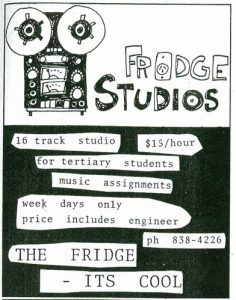
Founded Fridge Recording Studios
Fridge Records
Started Fridge Records
Contact89FM
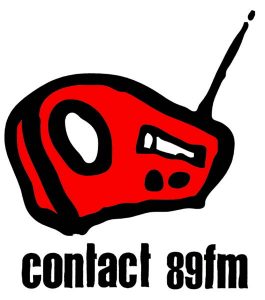
Managed independent radio station Contact 89FM.
Emersons
I was in a band! Actually several bands including the Mudpeople, the Waldos, the Proxies, Jam Sandwich and the Pregnant Hippies. Emerson MP3s below. The Emersons was me and Greg Locke (later well known for the Trons).
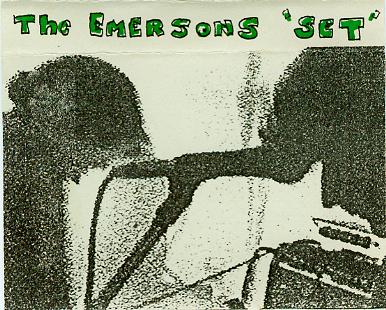
Call:
If I wanted to:
Unknown title 1:
Mild Thing:
Unknown title 2:
System:
Melody Discord:
Time:
Unknown title 3:
MORE TO DO….
Streaming Suitcase
PliegOS
Re:mote
Low Res
Skint Stream
Open Source Streaming Alliance
Open Channels for Kosovo
self.extracting.radio
ovalmaschina
Gema
simpel
